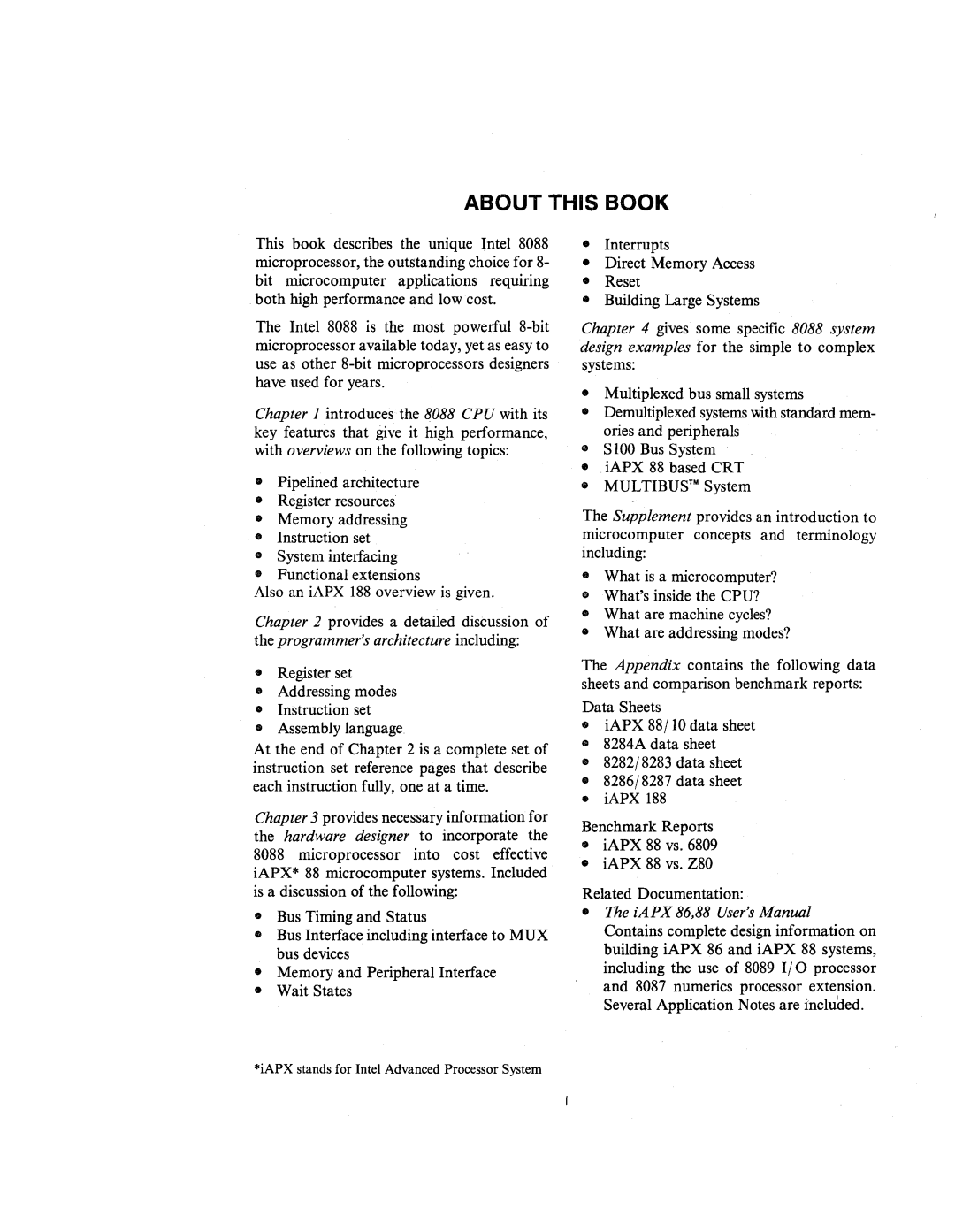
ABOUT THIS BOOK
This book describes the unique Intel 8088 microprocessor, the outstanding choice for 8- bit microcomputer applications requiring both high performance and low cost.
The Intel 8088 is the most powerful
Chapter 1 introduces the 8088 CPU with its key features that give it high performance, with overviews on the following topics:
•Pipelined architecture
•Register resources
•Memory addressing
It Instruction set
•System interfacing
It Functional extensions
Also an iAPX 188 overview is given.
Chapter 2 provides a detailed discussion of the programmer's architecture including:
•Register set
•Addressing modes It Instruction set
•Assembly language
At the end of Chapter 2 is a complete set of instruction set reference pages that describe each instruction fully, one at a time.
Chapter 3 provides necessary information for the hardware designer to incorporate the 8088 microprocessor into cost effective iAPX* 88 microcomputer systems. Included is a discussion of the following:
•Bus Timing and Status
•Bus Interface including interface to MUX bus devices
•Memory and Peripheral Interface
•Wait States
•Interrupts
•Direct Memory Access
•Reset
•Building Large Systems
Chapter 4 gives some specific 8088 system design examples for the simple to complex systems:
•Multiplexed bus small systems
•Demultiplexed systems with standard mem- ories and peripherals
•SlOO Bus System
•iAPX 88 based CRT
•MULTIBUS™ System
The Supplement provides an introduction to microcomputer concepts and terminology including:
•What is a microcomputer?
.. What's inside the CPU?
•What are machine cycles?
•What are addressing modes?
The Appendix contains the following data sheets and comparison benchmark reports:
Data Sheets
•iAPX 88110 data sheet
•8284A data sheet
•8282/8283 data sheet
•8286/8287 data sheet
•iAPX 188
Benchmark Reports
•iAPX 88 vs. 6809
•iAPX 88 vs. Z80
Related Documentation:
•The iAPX 86,88 User's Manual
Contains complete design information on building iAPX 86 and iAPX 88 systems, including the use of 8089 110 processor and 8087 numerics processor extension. Several Application Notes are included.
*iAPX stands for Intel Advanced Processor System
